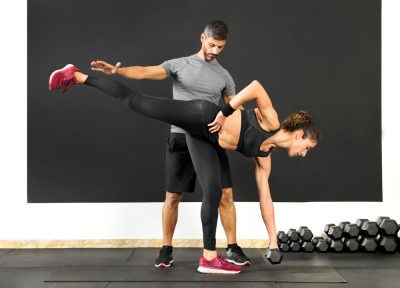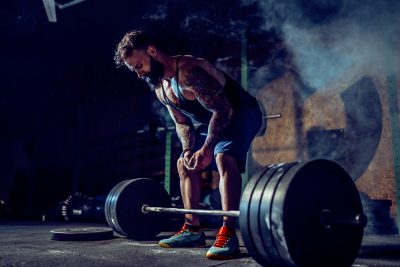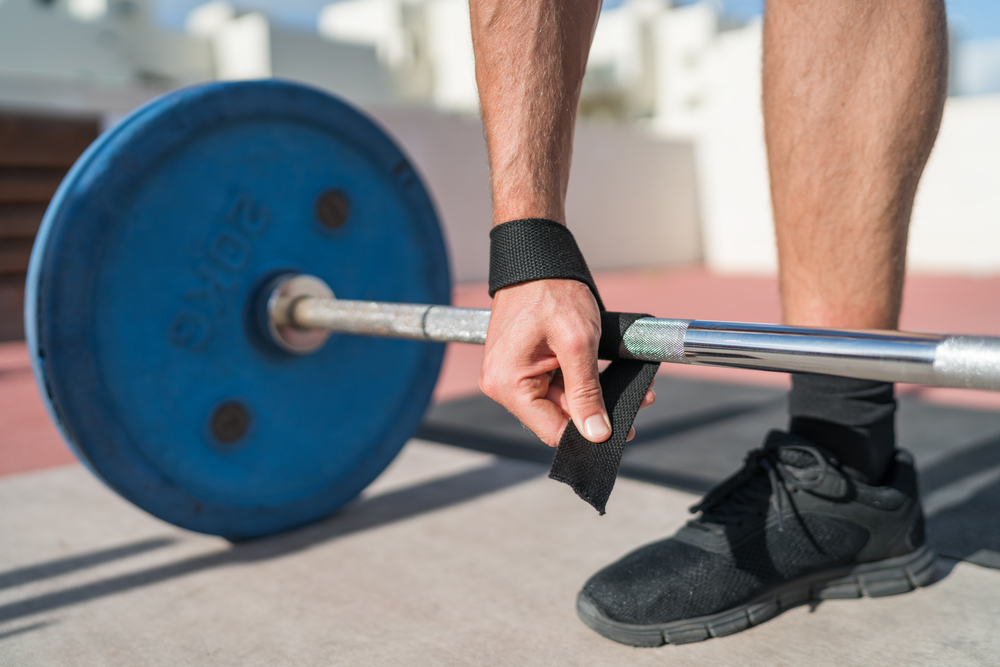As an athlete, when you become relatively strong, one limiting factor when you are performing exercises such as rows, deadlifts, and hang power cleans is your grip strength. You would be able to handle heavier weights with your back and legs, but because the dumbbell or barbell slips out of your hand, you will be forced to utilize a lighter weight for your workout session. This could impact your strength development negatively. Lifting straps are often the solution to this problem. This tool is an accessory that helps with your grip when performing certain exercises.
One strap is worn each on both hands, then you put the loop around your wrist and wrap the loose end around the dumbbell or barbell. When you do this, a connection is created between the bar and your hand that supersedes your fingers’ strength. In addition to increasing safety, you will also be able to move and hold heavier weights. When using straps, you have to ensure that the loop is placed around your wrists, which would see that the end of the strap is extended in the path of your thumb, across your palm. You should also ensure your wrap is started round the bar by looping it under the weight instead of over the top of the weight.
If you are not trying to particularly boost your grip strength by the use of targeted forearm and grip work, you should not lift weights when there is a high risk that it could slip out of your hands when you are performing the exercise. This is because when the dumbbell or barbell is slippery, and it falls from your hand, it could fall onto your feet or move your body into a dangerous position, which could result in injuries. There are a variety of straps you can choose from, but research has shown that the most useful and versatile is the basic loop strap. If you don’t have adequate grip strength and you want to lessen the risk of missing lifts, you should go for lifting straps of high quality.
How to use lifting straps
These are the steps to put on the lifting straps for your workout sessions.
- Form a circle with the strap by putting the end through the loop.
- Put your hand into the circle, and then your wrists should go in the round openings.
- The strap should be positioned between your index finger and thumb.
- Your less dominant hand should be placed on the bar and the strap wrapped around it.
- Then, wrap underneath the bar and wind it back to you.
- Then, repeat this with your second hand. Ensure that the strap is wound tightly because you want to use the least grip strength to lift the bar.
- Tighten the strap by twisting the bar towards you.
Should you use lifting straps?
A lot of trainers would discourage people from using lifting straps because they feel it removes your ability to build your forearm and grip strength and want you to build real grip strength. But, you have to note that this tool is not for developing grip strength primarily.
If you are going to be performing compound movements such as the deadlift or the hang power clean, using lifting straps would not permanently develop your grip strength. But, research has shown that you can lift about 30% more with lifting straps than you usually would, depending on the exercise.
An example is that when using lifting straps, you might be able to hang a power clean weight of 220 pounds. Keeping the straps aside, you would have anything above 180 slip out of your hands. What this means is that you are leaving about 40 pounds aside, which would see that you don’t hit your strength building target as quickly as you should.
It is also important to note that some people have smaller hands, and this could impact their ability to grip the dumbbell or barbell. This physical advantage cannot be overcome by any amount of chalk. So, if you are among those that have small hands, you can utilize lifting straps to help with your ability to grip the weight.
When you should use lifting straps
When you want to execute a posterior chain exercise or pulling movement with close to maximal or maximal weights, the first thing to give out is your grip before your hamstring, lats, traps, or upper back. You should use lifting straps in situations like this. While warming up, use your bare hand as long as you can. When you are getting to the last warm-up set, you can utilize the lifting straps before you perform your first real set on exercises such as dumbbell split squats, deadlifts, or hang power cleans. If this is not the case, you should keep the straps aside and boost your grip strength with submaximal weights. These are the exercises where you should utilize lifting straps;
Single-leg exercises with dumbbells
When performing exercises such as the single-leg dumbbell exercises, you would see stronger athletes utilizing weights of over 200 pounds. Your grip would tire out fast as your legs pump away when you are holding over 100 pounds each in both hands. Another critical fact to note is that you perform a set two times, which means your grip experiences the burn two times the volume your legs do. For instance, when you do two sets of dumbbell reverse lunges, it runs into four sets for your forearms and hands. This means that your grip would fail a long time before your legs, which is why it is highly imperative that you use lifting straps when you are lifting significantly heavier weights.
Rows and pulldowns
When you are looking to build a stronger and bigger back, you cannot overlook staple exercises like the lat pulldowns, seated cable rows, one-arm dumbbell rows, and barbell rows. You have to engage your rhomboids and lats properly if you want to gain maximum benefits from these moves. If you don’t utilize straps, your biceps and forearms would be forced to take over when you are using heavier weights to ensure the dumbbell is moving. The development of your back would be negatively affected if you don’t feel pulldowns and rows in the targeted muscles.
Deadlifts
Most people perform the deadlift by utilizing both the underhand and overhand grip, which could result in a biceps tear. There is no reason for you to risk this damage, you can utilize lifting straps while using a double overhand grip when you want to deadlift heavier weights.
Hang power cleans
You can reset your grip before the next rep when you are performing power cleans off the floor. But that is not the case when you are performing hang power cleans, as you grip the bar throughout the whole set. It is a move that is favored by a lot of field sports athletes. This limitation is removed when you use lifting straps. In addition to that, focusing on accelerating the bar without worrying about your grip becomes easier. Lifting straps help to boost bar speed, and that is an important factor for athletes looking to boost their power levels. However, ensure that a bit of slack is left between the weight and straps so that you have enough room for your wrists to maneuver around the bar for the catch.
It is also important to note that when using heavier weights, even if you use lifting straps, you would find it challenging to hold on to the bar. So, the straps would need to be looped tighter around the weight, which would restrict your wrist movement when you want to perform the catch. This would make hang power cleans a potentially dangerous exercise. While injuries are not prevalent, it is something you should keep in mind.
When you should not use lifting straps
When performing exercises that require you that something is pressed away from the body, utilizing straps would not provide any benefit. In that same sense, you do not get any benefit if you use them on direct arm work, since the weight doesn’t usually go more than what your hands can hold. So, you should set the straps aside when you are performing exercises like the triceps extensions and pushdowns, curls, and vertical and horizontal presses.
There is also the farmer’s walks and chin-ups. These are the 50/50 exercises, which means that whether you use straps here or not depends on your training goals and personal preferences.
When you are doing the farmer’s walks, you can go either way. It is an exercise that is mostly performed chalked up, but you can overload your legs, core, and upper traps when you use lifting straps because you can move more weight over significant distances.
When you don’t use straps with the chin-ups, you would be able to pull your body weight over the bar on your own. However, using straps would take out the need to worry about your grip and allow you to feel your lats better, which is a great step in creating a more powerful mind to muscle connection.



